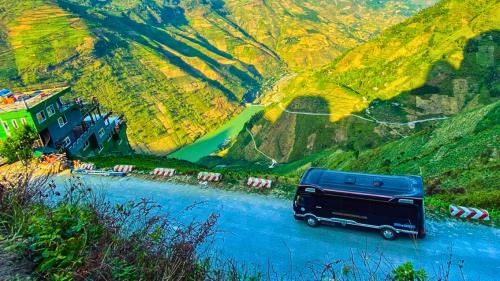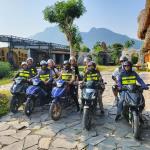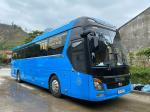Planning the iconic Dong Van Karst Plateau loop and wondering how Ha Giang motorbike rental works in real life? Good choice—renting a bike is the most flexible way to master sunrise/sunset views on Ma Pi Leng Pass, detour to Lung Cu, and linger in quiet valleys like Du Gia. This focused guide compiles 2025 prices, documents you actually need, best bike types, deposit policies, a sample 4-day loop, and practical safety tips—so you ride legally, confidently, and within budget.
Recommended Tours for You:
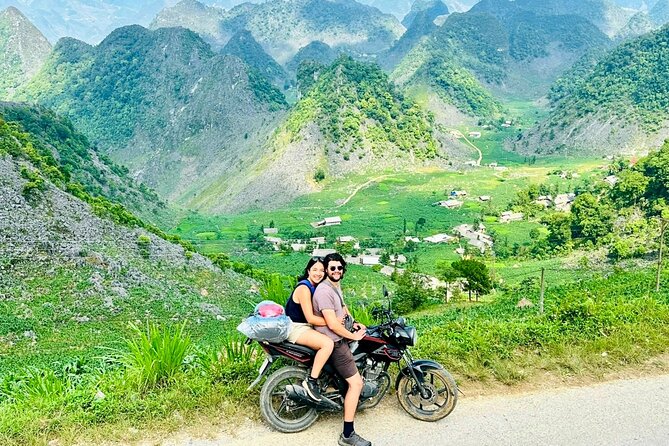
2025 rental prices & typical inclusions
-
Semi-auto 110–125cc (beginner-friendly): 180,000–230,000 VND/day
-
Manual/clutch 125–150cc (experienced riders): 220,000–300,000 VND/day
-
Automatic scooter 110–125cc (city-easy, pass-tricky): 180,000–250,000 VND/day
-
Big bike 150–250cc (limited stock): 350,000–700,000 VND/day
What’s usually included: basic helmet, bungees/phone mount, simple raincoat, tool kit, route briefing.
Add-ons (paid/optional): premium helmet upgrade, riding pads, dry bags, damage cover (if offered), 1-way drop fees (rare).
Deposits: 2–5M VND cash or passport hold—always take bike photos at handover and get written terms.
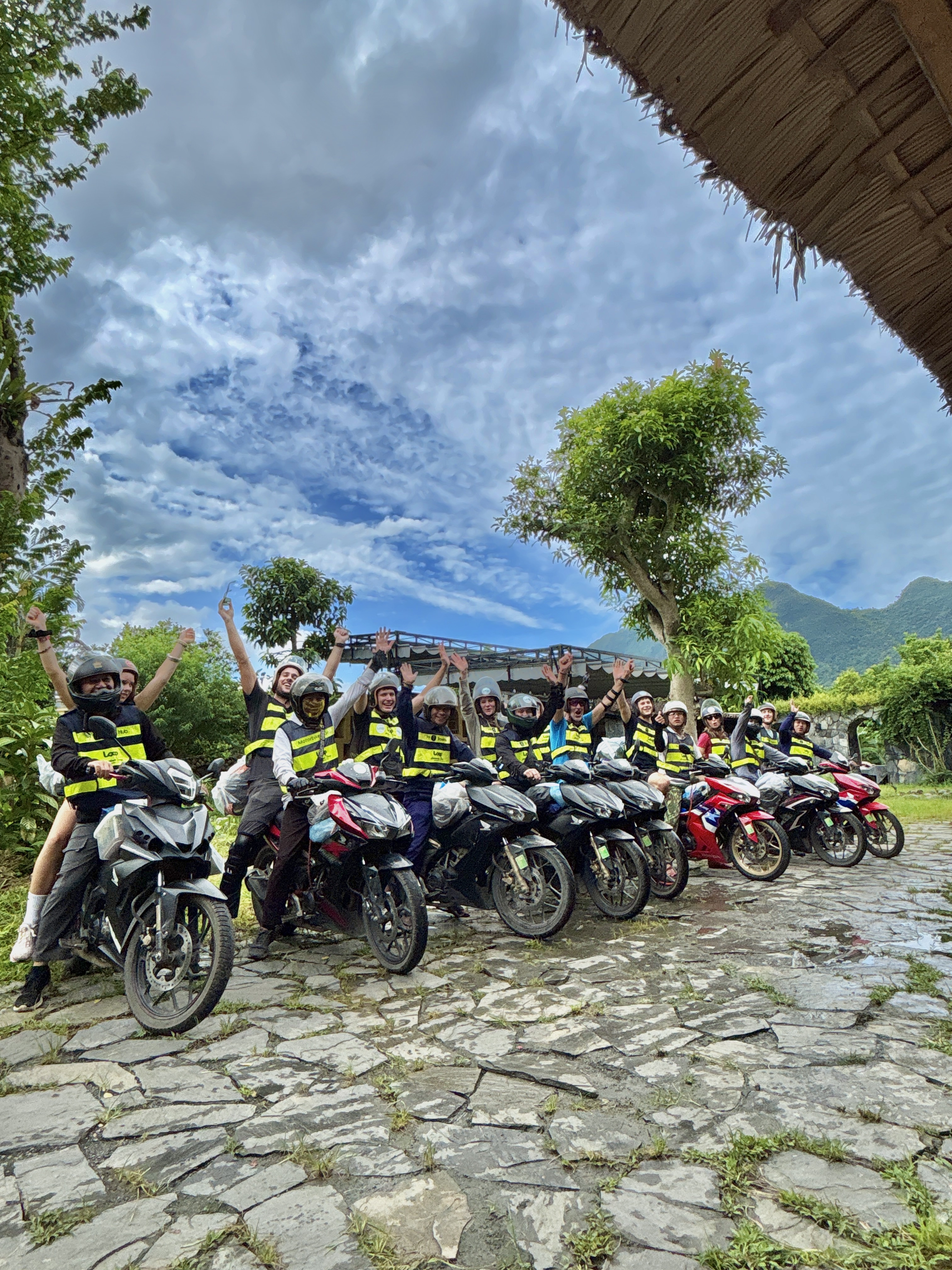
Peak weeks (Oct–Nov, Mar–Apr) push rates up. Reserve 1–2 weeks in advance for manuals.
Licenses, IDP & insurance (what you really need)
-
Motorcycle license: A valid home-country license covering the engine size you rent.
-
IDP (1968 Geneva Convention): Required for many nationalities; match the category on your license.
-
Insurance: Your travel insurance must explicitly cover motorbikes on mountain roads in Vietnam (note engine limits >125cc on some policies).
-
No license/IDP? Choose an Easy Rider (pillion) or car with driver—safer and compliant.
Pro tip: Keep passport/ID scans on your phone; provide a cash deposit instead of your passport whenever possible.
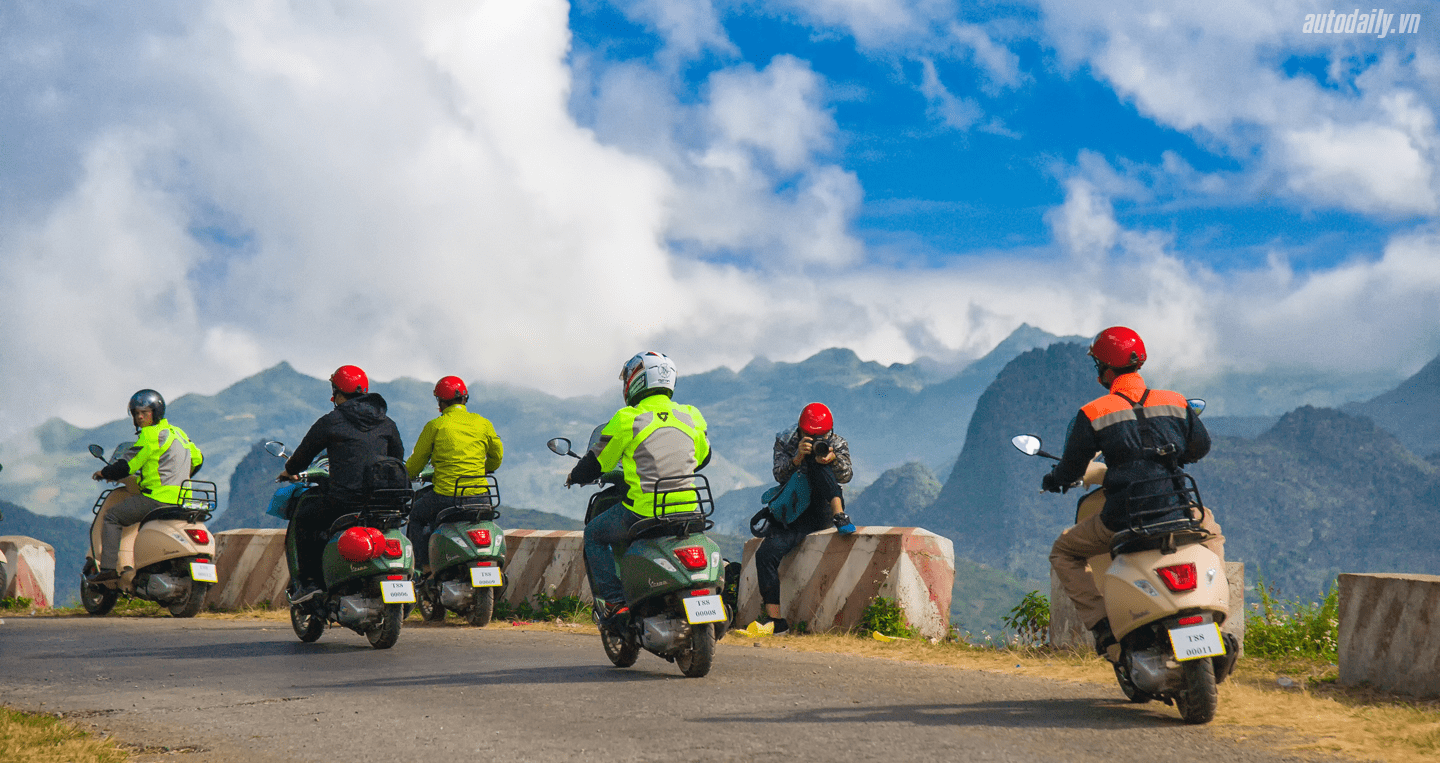
Which bike should you choose?
-
Semi-auto 110–125cc: Best balance of control and simplicity; strong engine braking, low fuel use, forgiving on steep climbs/descents.
-
Manual 125–150cc: Extra torque for Ma Pi Leng and rougher slopes; ideal if you’re comfortable shifting.
-
Automatic scooter: Easiest in towns but small wheels and weak engine braking make it least ideal on steep/gravel sections—only for confident riders in dry weather.
Condition matters more than brand. Inspect:
-
Tires: deep tread, no sidewall cuts.
-
Brakes: firm lever feel, no sponginess.
-
Chain/sprocket: correct slack, smooth roll.
-
Forks/shocks: no oil leaks; bike tracks straight at 40–50 km/h.
-
Electrics: lights, horn, indicators, phone mount power.
5-minute pre-ride checklist: lights, horn, mirrors, tire pressure, chain slack, tool kit, spare tube (if offered), and a brief test loop.
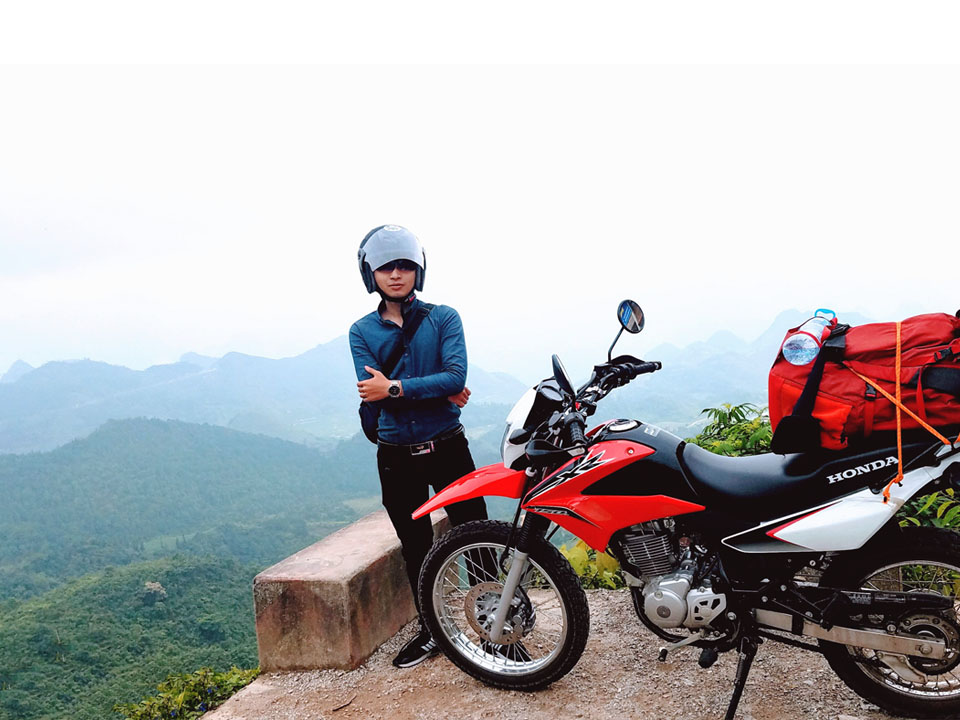
How to pick a reputable Ha Giang motorbike rental shop
-
Clear contract (English): price/day, deposit, damage matrix, late return policy.
-
Maintenance logs: recent oil change, brake/chain service, spare bulbs/fuses.
-
Helmet variety: sizes S–XL; option to upgrade to 3/4 or full-face.
-
Test ride allowed: check clutch bite, gear smoothness, stopping distance.
-
24/7 support: hotline (Zalo/WhatsApp), rescue coverage, replacement bike terms.
-
Recent reviews: look for mentions of fast assistance, fair deposit return, honest damage assessment.
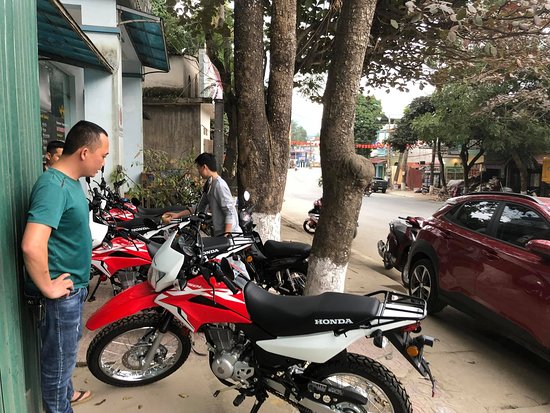
Sample Ha Giang 4-day motorbike loop (distances & fuel)
-
Day 1: Ha Giang City → Quan Ba (Heaven’s Gate, Twin Mountains) → Yen Minh → Dong Van (~150–170 km)
-
Day 2: Dong Van → Lung Cu Flag Tower → back → Ma Pi Leng Pass → Meo Vac (~110–140 km)
-
Day 3: Meo Vac → Mau Due → Du Gia (~120–150 km)
-
Day 4: Du Gia → Tam Son (Quan Ba) → Ha Giang City (~120–140 km)
Fuel reality: 110–125cc bikes typically use 2–3 L/day. Top up whenever you pass a station; don’t drop below half tank before long legs.
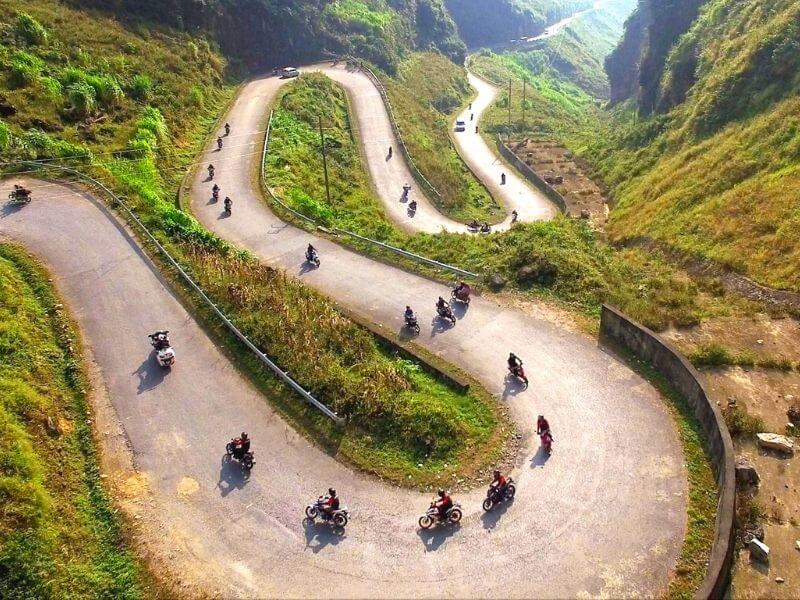
Safety essentials for mountain riding
-
Daylight only: plan to reach your stay before sunset; fog + hairpins = risk.
-
Eyes through the turn: look where you want to go; prefer engine braking on descents.
-
Leave space: gravel, animals, and buses cutting corners happen; keep margins.
-
Gear up: snug 3/4 or full-face helmet, gloves, long sleeves/pants, sturdy shoes; add knee/elbow pads if new to passes.
-
Weather flips fast: pack a rain jacket year-round; wait out heavy rain at a café.
-
Respect culture/checkpoints: slow in villages, ask before photographing people, follow any police/border guidance.

What does it really cost? (per person)
Budget self-ride (3D2N)
-
Semi-auto (3 days): 600–690k VND
-
Fuel: 180–300k VND
-
Dorms (2 nights): 240–500k VND
-
Food & coffee (3 days): 450–900k VND
-
Tickets/parking/boat: 200–400k VND
Subtotal (excl. Hanoi transport): ~1.7–2.8M VND (≈ US$70–115)
Comfortable self-ride (4D3N)
-
Manual (4 days): 900k–1.2M VND
-
Fuel: 240–480k VND
-
Private rooms (3 nights): 1.5–2.4M VND
-
Food & coffee (4 days): 600k–1.2M VND
-
Tickets/parking/boat: 300–500k VND
Subtotal: ~3.5–5.8M VND (≈ US$140–230)
(Add 600k–1.2M VND for bus/van Hanoi ↔ Ha Giang.)

Common mistakes (and easy fixes)
-
Renting an automatic for steep passes → pick semi-auto/manual for control.
-
No proof of insurance → carry your policy PDF + hotline.
-
Returning late without notice → message the shop early; most offer a grace window.
-
Zero cash on hand → bring small bills (5k–50k) for parking/snacks/minor fixes.
-
Poor visibility photos on the pass → plan golden hour on Ma Pi Leng and avoid midday haze.
Packing list for a rental-based loop
-
Documents: passport/ID, motorcycle license + IDP (1968), insurance proof, booking screenshots.
-
Riding kit: quality helmet (upgrade if needed), gloves, rain/wind jacket, long pants, neck gaiter, sunglasses.
-
Tech: phone with offline maps, power bank, headlamp, cables, phone mount.
-
Health: sunscreen, lip balm, basic meds, electrolytes, band-aids.
-
Bags: dry bags/liners, extra bungees/Rok-straps; microfiber cloth for camera/visors.
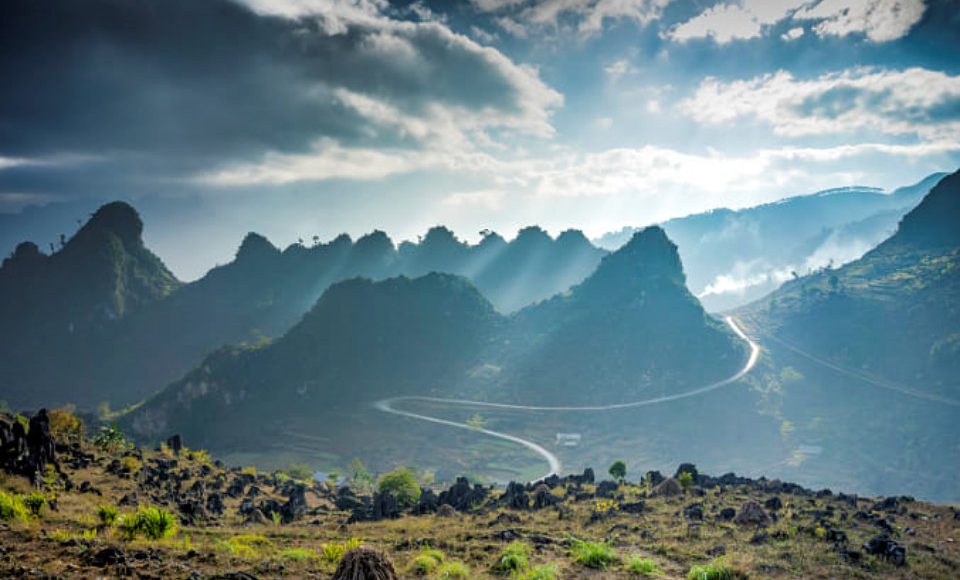
FAQs — Ha Giang motorbike rental
Can beginners rent and ride the loop?
Yes, but the loop has technical sections. Start with semi-auto, ride only in daylight, or consider Easy Rider (pillion) while you learn.
Do I need a Vietnamese license?
Many travelers ride with a home license + IDP that matches engine class. Riding without proper documents may void insurance—when unsure, choose pillion or car.
What if my bike breaks down?
Call the rental hotline. Reputable shops offer phone support, reimburse minor repairs, or deliver a replacement bike when feasible.
Can I return the bike in another town?
Usually no—round-trip to the same shop is standard. Ask first; one-way returns can incur high fees.
Are helmets included?
Yes, but upgrade if the helmet is worn or loose. A snug 3/4 or full-face is worth the small extra cost.
Conclusion
A great Ha Giang motorbike rental experience rests on three fundamentals: the right bike, the right paperwork, and the right habits on mountain roads. Choose a semi-auto or manual with healthy tires and brakes, bring your license + IDP + insurance, and keep rides to daylight hours. Confirm deposits, inclusions, support hotlines, and test the bike before you pay. Do that, and the loop rewards you with cliffside horizons, jade canyons, village hospitality—and the kind of freedom only two wheels can deliver.
Plan your adventure today! For more details and personalized support, contact Thelooptours Hotline: +84329196074.


